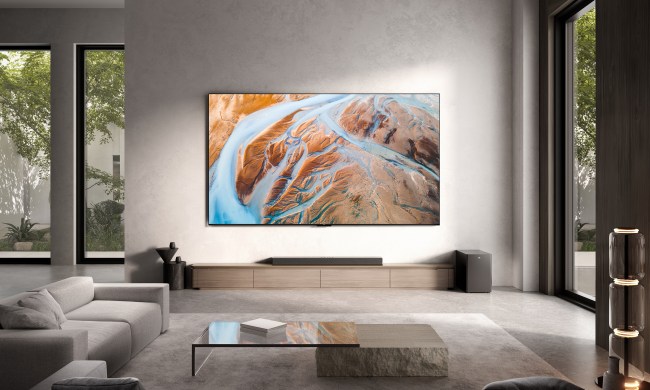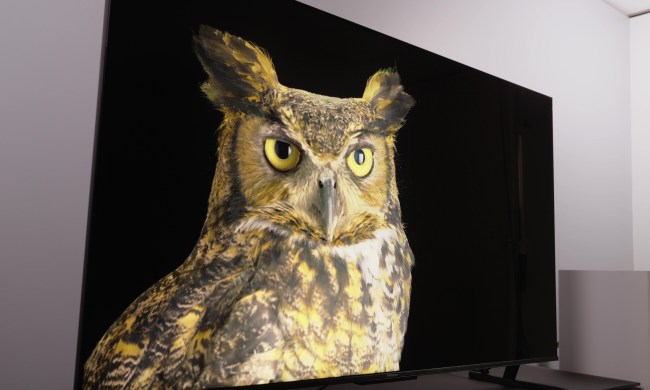- Rich, vibrant color
- Vivid HDR highlights
- Superior highlight and shadow detail
- Excellent Sound
- Some slight blooming/halo
- VRR disables local dimming
With all the buzz around the Sony A95K — the first TV to use QD-OLED display tech — it might be easy to overlook the fact that Sony also is bringing its first mini-LED backlit TVs to market in 2022. Exactly when and for how much, we don’t know yet but we will update this review as soon as Sony publishes that information.
The Sony X95K TV reviewed here is the company’s best 4K mini-LED backlit TV, and expectations are high. Will it deliver OLED-like black levels alongside potent HDR punch, paired with Sony’s legendary color accuracy? Let’s find out.
Sony Bravia X95K mini-LED TV video review
Out of the box
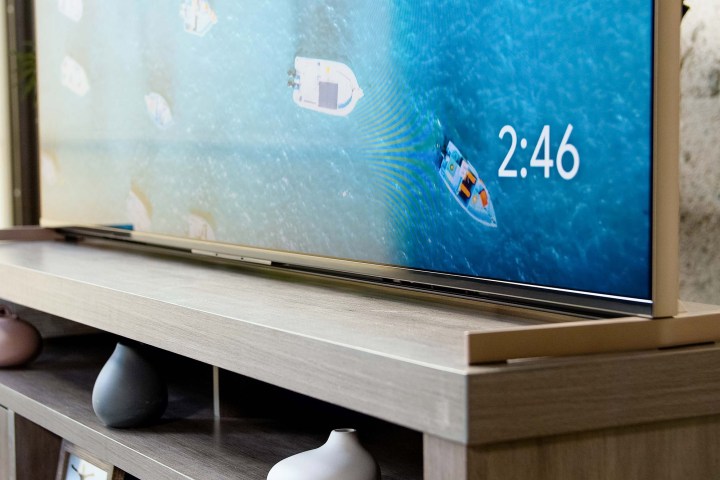
The feet included with the X95K are a slimmed-down version of what we’ve seen in years past, taking on a more svelte aesthetic. They can be positioned toward the far ends of the TV for a wider stance, or in a pair of receptacles toward the center to fit on a narrower media stand.
Plastic panels on the back of the TV are provided for concealing the TV’s connection bay and to aid with cable management. Like the A95K, the X95K will work with Sony’s new Bravia Cam, however, the camera is not included (must purchase separately) and the accessory cam connects via USB rather than docking directly to the TV. The Bravia Cam was not ready for me to test at the time of evaluation, so I’ll make that a focus when the X95K arrives on my test bench for a second assessment.
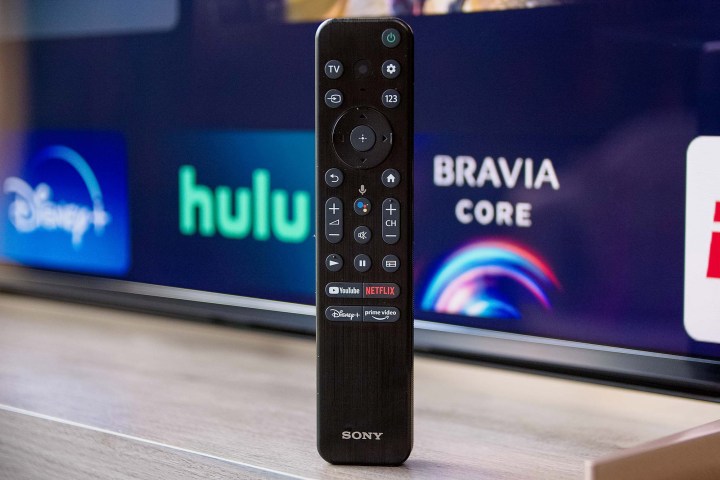
The X95K gets an updated remote, scaled-down in size and with fewer buttons. The new remote features a black brushed metal face and a grippy plastic backing, but unfortunately doesn’t support Sony’s new Remote Finder Function, which emits a beeping sound when you ask Google Assistant to find your remote.
Notable features

The X95K offers four HDMI inputs, two of which support 4K 120Hz and Variable Refresh Rate (VRR) — one of the two also supports eARC.
As is the case with all Bravia TVs, the X95K has an ATSC 3.0 tuner built-in for access to what is being referred to publicly as “NextGen TV.”
The X95K runs the Google TV smart TV platform and runs it very well. The user menus are easy to access and navigate, and otherwise daily use of the TV feels great because the TV is responsive to remote clicks and quick to load up apps. Since it is a Google TV, Chromecast is naturally built-in, but the X95K also supports AirPlay 2 and HomeKit.
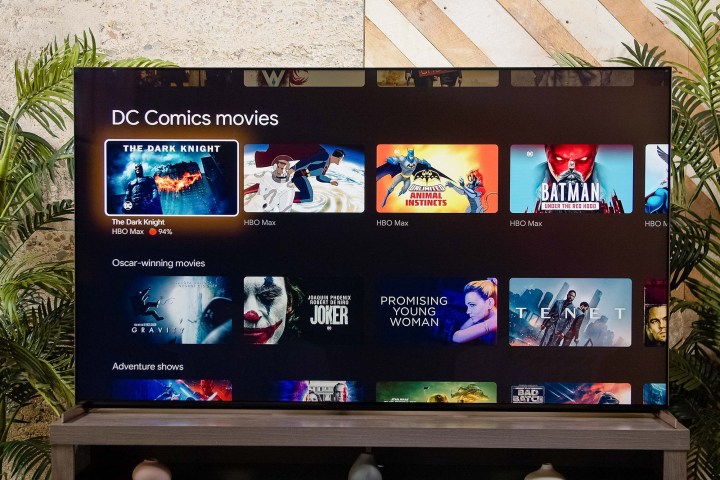
Sony’s anti-glare system was predictably effective during the time I used it. I didn’t run it through any stress tests – for instance, I did not shine a bright lightbulb directly behind my head to see how annoying the reflection was — but the TV handled the light beaming in through the windows at our downtown San Diego test location pretty well. I never found myself frustrated by glare.
Test results
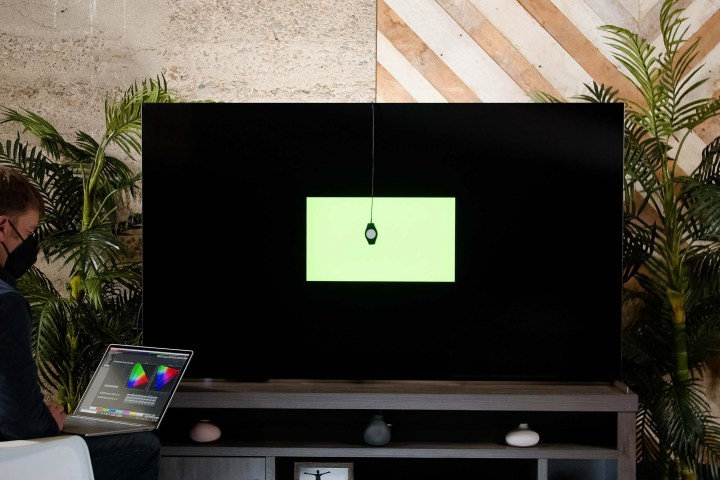
After a factory reset and confirmation that the firmware update was about the same as what the TVs will update to when buyers set them up at home, I ran tests using Calman Ultimate software and a SpectraCal C6 meter profiled to an Xrite i1 Pro. I’ll get into the measurement results and performance in a moment.
Just as I will with all Sony TVs this year, I put the TV into its custom picture preset mode and while I did cycle the peak brightness setting through all its available options — Off, Low, Medium, and High — I took the results from the Medium setting as a baseline for the TVs performance.
The next two sections dig fairly deep into test results and technical design principles. If that gets your motor running, keep reading, but if you really just want to know what I thought of the X95K’s picture quality, feel free to skip ahead.
After some pretty light adjustments to the two-point white balance, here’s what I got: The peak brightness in HDR hovered just under the 1,500-nit mark. And like most TVs, the brightness rose as it moved from a small 2% window up to a 10% window size, then started getting dimmer as the white window got larger.
The average picture level on the X95K is excellent.
When I ran the peak luminance stability test, it hung out right at 1,400 nits for about 30 seconds solid without significantly dimming at which point I moved on. Without any adjustment to the white balance, the greyscale errors were already ridiculously low and they dropped to below perceivable error with only minor tweaks to the blue and red channels.
When I checked color, I saw similar accuracy, with HDR colors also peaking at about 1,400 nits, which is impressive. DCI-P3 color gamut coverage was at about 95%. The TV’s BT.2020 coverage was pretty good at 72% coverage, but to be honest, I was expecting a tiny bit better. I’ll be testing this again later this year, and I’m looking forward to seeing how Samsung’s Neo QLED, LG’s QNED, and TCL’s own mini-LED QLED, and Vizio’s sets rank in comparison.
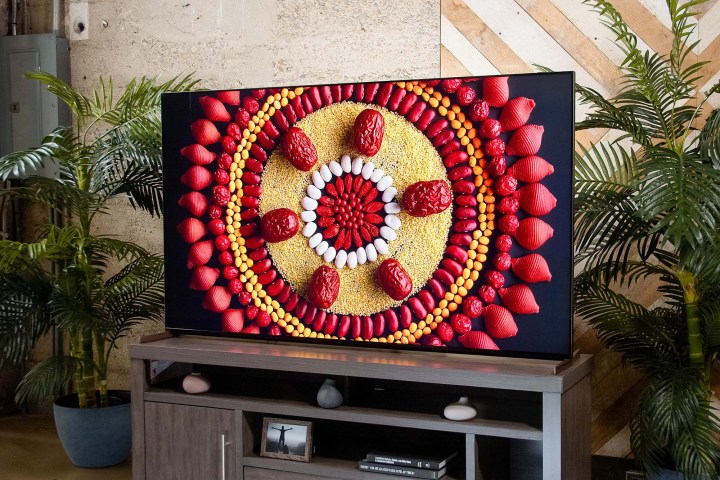
Peak specular highlights on this TV were fan-freaking-tactic. Outside of the test patterns, I think the TV was exceeding 1,500 nits pretty handily. That’s Sony’s processing coming into play. In my experience, Sony’s chip doesn’t game peak brightness readings when it recognizes a test pattern the way some other TVs do. So when it came time to simply watch TV, I was very dazzled by HDR highlights.
The average picture level on the X95K is excellent. It has a very high brightness image that, frankly, I think punches well above most of the other LCD TVs I’ve tested, save some of Hisense’s just straight-up retina-searing options like the U8G from 2021.
Picking Nits … and dimming zones
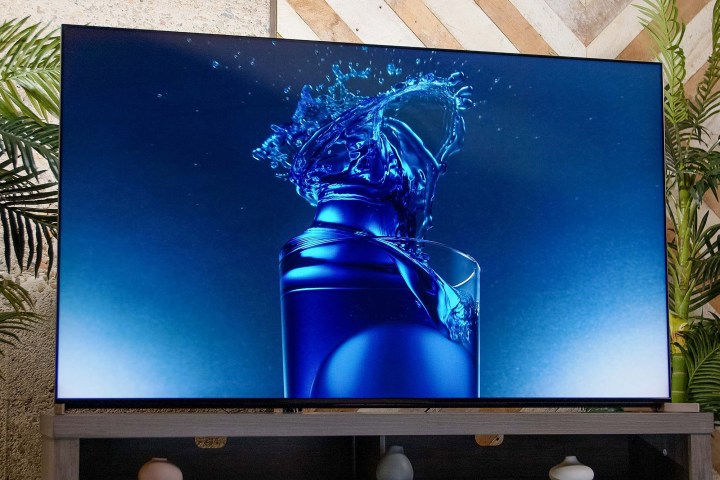
Generally speaking, I’ve found that Sony TVs tend to achieve impressive performance by using fewer backlight dimming zones than some other TV brands that use as many local dimming zones as they possibly can. I’ve found that there is some credence to Sony’s stance that it isn’t how many zones you use, it’s how you use them. However, I have seen some cases where a high density of dimming zones has resulted in very impressive black levels, very well-mitigated halos (light surrounding bright objects on dark backgrounds), and a minimum of backlight blooming. This had me wondering if maybe Sony should try doing the same.
Sometimes Sony’s approach has played to my personal preferences — see the Sony Z9J review — and sometimes it hasn’t — see the Sony X90J review. With the former, I was flabbergasted that the Z9J performed as well as it did with as few dimming zones as it apparently had. With the latter, I felt like more dimming zones might have yielded better performance for the X90J. Perhaps, I thought, the “Goldilocks” position would be somewhere in the middle.
Fast forward to 2022, in which mini-LED backlighting comes with many more backlights for Sony to control, the stakes seem even higher. Well, here’s my takeaway: While I still don’t understand how Sony does it from a technical standpoint, I do think made the right tradeoffs, resulting in a Goldilocks mini-LED backlit TV.
The blooming on the X95K TV is minimal. I stress-tested the X95K with bright white captions down in the black letterbox bar area — a test which some might consider a little unfair, but I can’t be the only one who watches at night with captions on, right? I found the X95K did exhibit some blooming, but it was minimal, and I wasn’t bothered by it.
To be clear, the blooming was more significant than what would be seen on, say, a Samsung QN90A. On the other hand, though, the X95K’s average picture level and peak HDR highlights were both brighter than a Samsung QN90A.
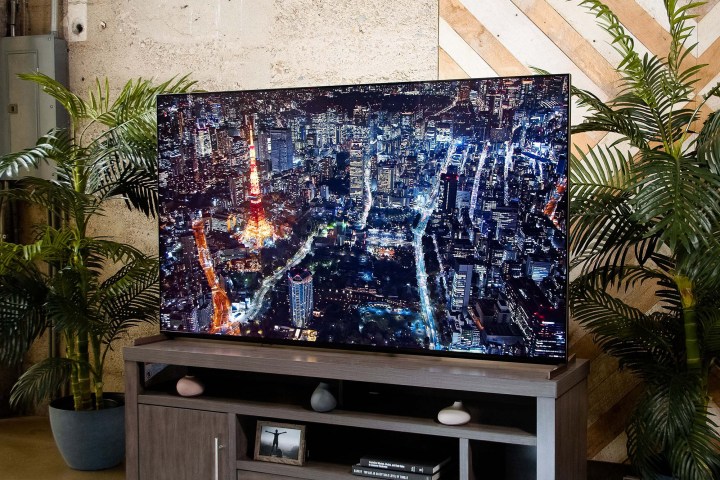
Could the X95K have better overall performance with more dimming zones? It’s possible, but I doubt it. At some point, you run into the law of diminishing returns. Adding zones may add more precise backlight control, but no amount of backlight control can correct the fact that there will always be some level of blooming on an LCD-based TV. In the end, I think which is “better” — a TV with a brighter average picture level and HDR highlights vs. a TV with almost no blooming but slightly dimmer picture — will come down to personal preference.
Personally, I find myself tending to prefer the brighter option with just slightly more blooming. However, I recognize that what some folks want is an LCD TV that gets as close to OLED performance as possible in the blacks, while being notably brighter than an OLED. I mean, let’s be honest, that kind of TV is what Samsung has been chasing for the past few years, and it is because we asked for it.
At any rate, no matter your preferences, I think if you stand back and stop literally picking at nits, there’s no denying that the X95K is an extremely impressive TV.
Picture Quality

Since I had the rare pleasure to have the X95K sitting in close proximity to the Sony A95K QD-OLED, I couldn’t help comparing them in real time — totally unfair, but unavoidable all the same. Despite the use of two completely different technologies, in which the QD-OLED has distinct advantages, I still found myself incredibly impressed with the X95K.
Overall, I think the X95K offers fantastic picture quality.
Somehow, the X95K had similar color saturation and similar color accuracy, very impressive black levels and shadow detail, great depth, and exceptionally dazzling HDR highlights. In many ways I expected the QD-OLED TV to trounce the X95K, but it didn’t. The X95K offered tremendous depth, and the realism of the images came off as superior to what I’ve seen on most of the mini-LED backlit TVs I reviewed last year.

Despite what could be considered as a rather modest peak brightness measurement by today’s standards, where some TVs are shooting for 2,500 nits and beyond, I never felt like the X95K delivered anything other than a wholly satisfying image with tons of HDR punch. Also, the details in the bright highlights and shadow areas were so well-executed, I felt like I could see more of what was captured by the content’s creators. Often, it seems dazzling and detailed don’t co-exist in a TV, but I found that the X95K is able to pull off both attributes simultaneously, and quite well.
Overall, I think the X95K offers fantastic picture quality. The race for the best mini-LED backlit TV is definitely on, and it is going to be a super tight one this year. Toss in models from Samsung, Sony, LG, TCL, and Vizio, and customers will have a plethora of options to choose from, but I have no doubt the X95K will end up on most shortlists.
The drawbacks

So, what’s the bad stuff? Well, the X95K is an LCD TV, and as such the off-angle viewing experience takes a bit of a hit, even with Sony’s X-Wide Angle technology in play. When you sit dead on, the color, contrast, and saturation are excellent, and then the further you travel off to the side, the more those factors tend to drop off.
Also, the X95K offers just two inputs with 4K 120 and VRR capability, one of which is the eARC port, which may be a limiting factor for some.
Finally, it appears that the engaging VRR on the X95K (and likely other LCD TV models) does indeed mean that the TV’s local backlight dimming gets turned off. While I’ve been able to confirm this with Sony, and have learned the decision to do so, according to Sony, was based on delivering the best experience for users, I have not yet been able to confirm why, on a technical level, this was necessary. I will update this section accordingly if/when I do have an explanation.
Other than those three drawbacks, I wasn’t able to unearth much else in the time I had with the X95K. Motion looked super smooth — especially cinematic content — with almost no perceivable judder. And if you want artificial motion smoothing, I think Sony is giving users the best level of variable control to get a smooth moving picture without sapping the image of its realism.
Frankly, I think this is a TV that is going to need to be on my test bench for a full month so I can compare it to other TVs before I’ve got much shot at exposing what few limitations it may have.
Sound quality
When it comes to sound quality, I have a feeling that Sony is going to leave most of the competition in the dust. The X95K sounds pretty incredible. The fidelity has been improved pretty dramatically over last year’s X95J – the X95K sounds more open and less boxed in and has even more bass support than before. Sure, it will make a great center channel if that’s the job you give it, but it stands up really well all on its own, with great sound positioning around the screen, and good virtual surround sound effects.
Gaming
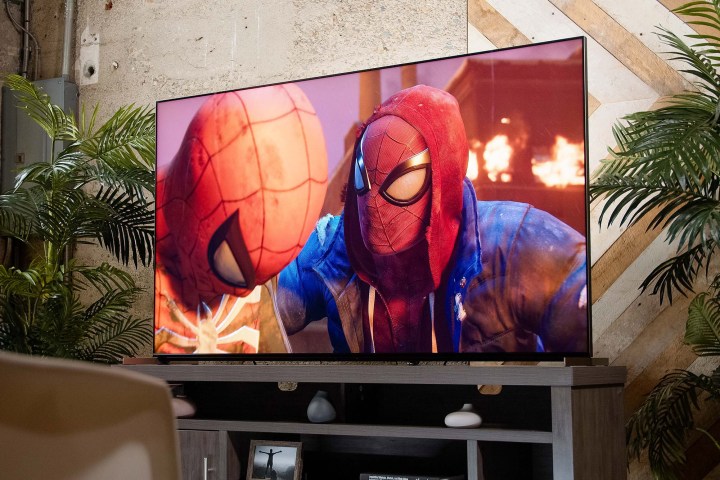
Once again, as I suggested with the A95K QD-OLED, I think the X95K will be excellent for playing video games. The addition of variable refresh rate is a nice add, and when I get a chance to test input lag I think we’ll find it to be competitive if coming up short of the absolute lowest you can get. Will it be the most advanced gaming TV option on the market? No, absolutely not. But for the vast majority of folks playing games on consoles, it’s going to offer an awesome experience, thanks to its excellent picture and sound quality.
Our take
The Sony X95K is easily in contention for one of the best 4K LCD-based TVs you can buy this year. That race will be very tight this year, but thanks to Sony’s stellar processing and engineering, the X95K is a bright, shining example of what today’s modern LCD TV is capable of delivering.
Is there a better alternative?
For better black levels and contrast, an OLED or QD-OLED TV would be necessary, making the LG C2, Sony A80K, or Sony A95K solid alternatives. For a brighter TV, Samsung’s Q90B holds a lot of promise. Otherwise, the Sony X95K currently stands as one of the best 4K LCD-based TVs you can buy. We’ll update this section as our 2022 TV testing progresses.
How long will it last?
Given its advanced mini-LED backlight system, powerful processing, and solid Google TV OS, the X95K should last well into the future.
Warranty
Sony offers a one-year parts and labor warranty on the X95K when purchased from an authorized retailer.



